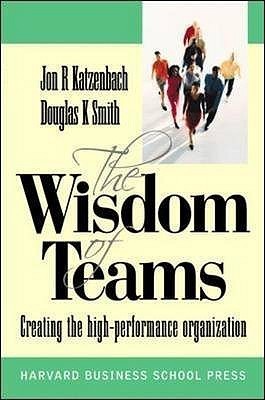What do you think?
Rate this book


304 pages, Paperback
First published January 1, 1993
A team is a small group of people (typically fewer than twenty) with complementary skills committed to a common purpose and set of performance goals. Its members are committed to working with each other to achieve the team's purpose and hold each other fully and jointly accountable for the team's results.The authors believe that the most important key to successful teams are clear, demanding, realistic and measurable performance goals and mutual accountability. The book is somewhat dated on its tunnel-vision insistence on performance as the primary objective and motivation to create teams, on its definition of balanced performance as relating primarily to financial performance and customer satisfaction, and on narrowingly taking into account only customers, employees and shareholders, ignoring other possible stakeholders, even though in a case study on a Motorola team they mention the key importance of their suppliers. It also ignores the importance of adhering to ethical values, thus Katzenbach and Smith's approach could equally apply to criminal or unethical organizations. So it is not surprising that one of their key examples is a team from Enron, a company that the authors speak highly of for having developed a “Vision and values” program but whose fraudulent accounting fraud and unethical behavior probably started as early as 1992 -though I have to admit this judgement is probably unfair since the unethical behavior only became clearly visible in 2000, and the team chosen as an example had, I believe, nothing to do with Enron's mismanagement. Ethical values tangentially appear in the case of Hewlett-Packard when the authors quote an HP executive as expressing that the company had “an almost religious interest in achieving legitimate operating earnings” and:
...it was not just the financial performance standards that motivated this team. It also found real meaning in the medical products business[...] Lew Platt [said]: “You get involved in electronics, and do good at the same time.”but they fail to pick up on the importance of ethical values.
Managers deal with routine change: raising prices, handling disgruntled customers, dealing with stubborn unions, replacing people, and even shifting strategic priorities.They do make an important distinction between teams who recommend things (biggest challenge is making handoff to those that must implement their findings), teams who make or do things (often need to develop new skills for managing themselves), and teams who run or manage things (address hierarchical obstacles and turf issues), but I would have liked the authors to provide more analysis of the differences between these kinds of teams.
Yes, there are important counterintuitive lessons about teams. But the vast majority of executives can rely upon their common sense and current skills to make teams work.I beg to differ.